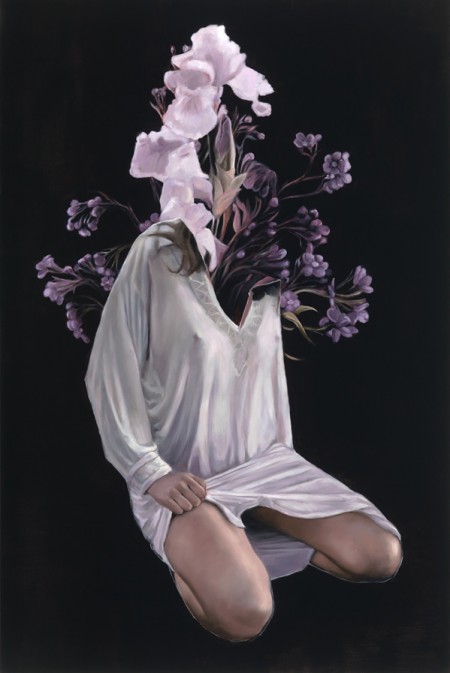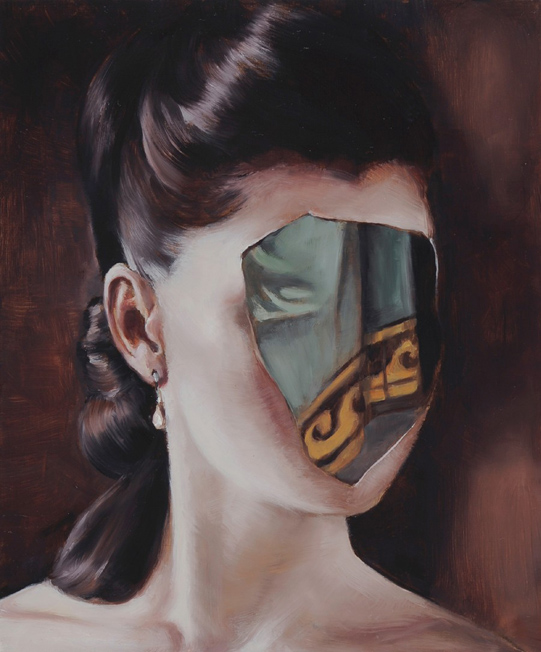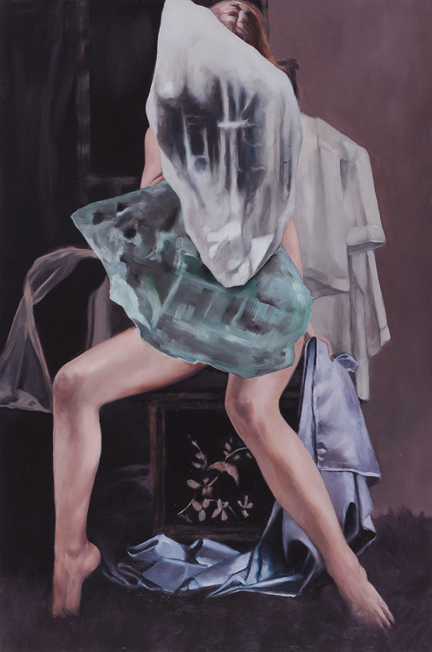THIS IS THE SCENARIO: I am lying in bed in my bathrobe and I am trying to write my ideal story. I don’t know what happens in the story yet. I just know that Balzac used to write in a robe and presumably could only write in the robe. And not just any robe, but a white cashmere Dominican monk’s robe that was tied around his waist with a silk belt, from which hung a pair of scissors and a golden penknife. Balzac was militant about how he wrote and what he wore. He had an extravagant taste for fine tailored suits, numerous gloves and jewelled walking sticks. He would wear his writing robe only with Moroccan slippers, and would write up to 16 hours a day, sustained by a continuous stream of black coffee, to produce 85 novels, with countless revisions, in 20 years. He ate, drank, wrote, slept, bathed, and spent more than his earnings. So he wrote more to pay off his creditors, but he couldn’t keep up with time.
Time is always running out, and I need to alleviate the angst rising from my throat, chest, stomach.
I bought a robe especially for this because it felt necessary at the time. The robe is called ‘Venice’ – which I thought was a good sign as the belt from Balzac’s robe was claimed to be Venetian gold. The online shopping description had said, ‘Living up to the legendary charm of its name, this is the Rolls Royce of all terry robes. Outside of the robe is lavish tufted pile, while the inside is soft and thirsty terry fabric.’ I’d pulled it straight out of the box at the post office and put it on straightaway. I’d expected some kind of ecstasy but the terrycloth only weighed heavily upon my body.
And – right at this moment, I’m blaming it for my inability to think clearly, and (in Hemingway’s voice) to write good, honest sentences.
I write to chase an idea – a fleeting moment to approach some kind of authenticity. It is an exasperation to feel alive. Often the source of pursuit is nameless and formless, more visceral than it is intellectual, more about the experience itself than its fulfilment. The pursuit is felt as an intensity that arises from the psyche and extends throughout the physical body. I clothe myself in narrative and write myself into the scene. I need to resolve the story, and this robe is going to help.

Lately my body has been breaking out in a rash. This almost always happens when I’m anxious, like when I’m late for something. I’ve been wearing this ankle-length robe for the past week to hide the rash (did I have a premonition of this rash when I bought the robe?). In my semi-delirious writing state I’ve been referring to it as ‘my’ Balzac robe, ‘my’ Balzac rash. The rash grows and travels from one part of my body to another; it’s hard to catch where and when it stops and ends, and at which point it mutates. When the rash travels up past my neck I just hide in my room. This gives me lots of quiet time to write and scratch at the rash. Staying for days on end in my room without any human contact draws me deep into other worlds – often dangerously but ultimately necessary. These are places where anything is possible, its limits bounded only by one’s own.
The sustained periods of self-absorption lend another dimension to the state of writing, transforms loneliness into solitude, empty pages into narrative. Thoughts become entwined with misperceptions, memories bent out of shape. No matter how hard I try it is simply impossible to represent thoughts and memories accurately. Something always mutates in the passage from image to word and vice versa. Instead of forcing links between them, I trace their trajectories. It’s my way of meandering the corridors of thoughts and spinning my own webs.
The robe covers my rash, lets me assume the role of other bodies, grants me access to extraordinary lives beyond these ordinary walls. In the theatre of my imagination, countless bodies are clothed in violent contortions. Lately they wear robes embroidered with gold and red thread, elaborate Baroque filigrees growing and pulsating across the entire width and length of the back. At times it looks like a giant gold beetle, at other times a Rorschach creature viewed through a kaleidoscope. Ruby clusters grow from points on the body – shoulders, elbows knees, simultaneously burgeoning and disintegrating. Around the waist they wear thick gold cords dripping with crushed rubies, the red thick like blood – heavy, glistening. Slick oils simultaneously hardening and melting. Molten lava. Faceless bodies. Or rather, whole heads covered in latex masks melting into the surface of skin and hair, a sticky composite where everything is pushed up or pressed against one another – a gelatinous force eating away at the faces. The robed bodies act out their parts via gestures and mutations in appearance. Are they trying to get somewhere or are they just going? Robed bodies with twisted limbs and weak hearts, kaleidoscopic visions at the edge of consciousness. I try to chase them down, pull back their robes and scratch at them. Shameful desires and broken memories, gaping holes and torn seams – narratives emerge from these hidden places like scent on a collar.

Here’s a memory that I return to again and again. He came and sat next to me on the curb early one morning. Californian high summer heat, the concrete sizzling on my skin. He was covered in a full-length bathrobe. ‘I started writing a new story today,’ he quipped. He rolled back the terrycloth sleeves. On his arms he had inscribed several lines with a thick needle, letters and symbols in an indecipherable arrangement. He would code all of his imagination this way: in a language that was not an end in itself, but full of departure points for imaginary worlds. He was Alice through a kaleidoscopic looking glass, a way of seeing through multiple dimensions all at once.
‘What’s the story about?’
He said, ‘It’s about these people we meet all the time here in this wretched place, you know, the ones who just want to be somebody else. Aspiring actors, directors and models in their waitressing and retail jobs, desperately wanting to be transformed. Not all that different from us, I suppose.’
I squinted at him, trying to make out whether he was real.
‘So they wear all these different robes, and the robes transform them into different people, or – you know – ideas of other lives. And after a while they begin to lose touch of who they really are. The robes start to mutate and grow, attaching themselves to the bodies, becoming the bodies. And soon enough these people start living through the robes, speaking in voices that are not entirely their own. They build identities out of the robes and construct histories out of the fragments of distorted memory and convoluted desires.’
He stressed, ‘It’s the robes – they clothe and take over the bodies, empty shells wanting to be filled with potential. They inscribe the bodies with meaning. They are access points to other worlds, other possibilities of becoming. Don’t you see – the robes write them into being.’
He asked me to look closer. His entire body was covered in inscriptions – glistening, raw, dripping with inky fluids the colours of ruby and gold, wandering over his back, chest, arms, thighs, neck, face. Mysterious shapes and symbols – seemingly alive – traversing and crawling on the surface of his skin, forming hardened clusters around the bends and joints, liquid gold articulating into filigrees. The coloured inks were growing and oozing out of incisions on his skin, covering almost the entirety of his body. It was hard to make out where his body finishes and where the inscriptions begin.
His inscribed skin was the robe – the fabric of his self, and his body – the shell – is the very medium through which the inscriptions could form and exude meaning. The inscriptions were written in code, as with all language I suppose, and it was up to me to use them, to access the other places.
In my daydreams I sometimes still see him, passing over the other bodies with his robe floating about his stride – silently, filled with repressed narratives, trapped in my memory. It is difficult trying to represent him in words – all of him, all of these bodies; once they are recalled, they mutate – they lose some essential part that could have only existed at that one singular point in time. You can repeat them, remember them, reproduce them – but they are no longer what they were, or what you think they were.

Extraordinary narratives arise from the hidden corners, the walls between the actual and non-actual become translucent, and the deeper I peer – through the doors, into the robes, at the surface of the bodies – the farther my thoughts travel and the more I uncover.
The city, the robe, the bodies – like language they ripple out to many tangents and dimensions the more you try to locate and fix them in place. You are perhaps reminded of an event or somebody from the past, or it might have been something someone had said, then you think it might have been a flicker of a dream instead, or perhaps it had all been imagined and that imagination had reminded you of some story you read. The deeper you go the more you lose yourself within the kaleidoscope of memory, imagination, and dream – all expanding in your present experience.
I am writing all this from my bed, within the four bare walls of a suburban bedroom. I am in my terrycloth bathrobe, sunken within its folds, and – coaxed by daydream – find myself in extraordinary circumstances.
Winnie Ha Mitford is a writer and doctor of philosophy at RMIT University, Melbourne.